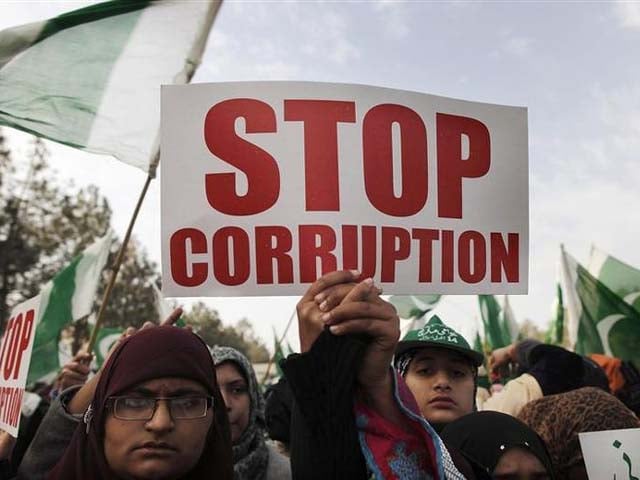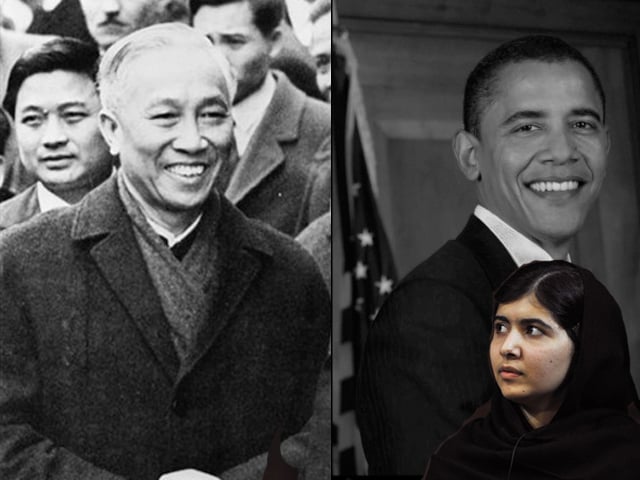
Aansoo Kohli: A candle in the wilderness, a teardrop of inspiration
She is a girl, who is handicapped, born to a Hindu family and is poor; making her a 5th class citizen in Pakistan.
Exiting the Super Highway just outside Hyderabad city and taking the bypass to Mirpurkhas, dense mango orchards with rows upon rows of mature mango trees greet you. You drive past the Sindh Agricultural University Tando Jam, pleasantly surprised by its well-maintained, imposing buildings and its immaculate grounds.
The dual-carriage highway from Hyderabad to Mirpur Khas has to be one of the best, smoothest roads anywhere in the country. Just before Mirpur Khas, we turn off the highway onto a single track, bumpy, side road to the town of Kunri. Fields of sugarcane, banana, mustard, onions and other veggies on either side of this road are a feast for the eyes, and make up for the terrible road we are now on. And then finally, around Kunri itself, fields of red chillies appear, for Kunri is one of the top red chilli growing areas in Asia.
 The start of our journey from Karachi. Photo: Zohare Ali Shariff
The start of our journey from Karachi. Photo: Zohare Ali ShariffI am happy I am making this trip in my friend Nasir Teherany’s Tundra, rather than in my own car, as the muscular Tundra makes light of the potholes and the broken road surface. Sameer Mandhro, The Express Tribune reporter who set off the chain leading up to this trip, had not warned me about this road! But then, in his defence, he had told me to reach Kunri by the longer route via Umerkot. Well, maybe next time…
But wait, you haven’t been introduced yet to Sameer, have you?
On November 2, Sameer wrote his first story in The Express Tribune on Aansoo Kohli. I missed it but caught the next one he did on November 11. The gist of both is as follows:
Aansoo Kohli, in her early 20s, is a physically impaired girl from the minority Hindu community, living in a poor, marginalised village near the dusty town of Kunri, in the Sindh province of Pakistan. There you go – a single sentence that totally sums up Aansoo’s apparently, desperately unfortunate existence.
First, she is a girl in a male-dominated, often misogynistic social order. That makes her a second-class citizen. Second, she is physically handicapped, with one leg functionless since the age of two. That degrades her further to a third-class citizen status. Third, she was born in a non-Muslim religion and hence she is a fourth-class citizen, if there can be such a classification. And finally, if all this was not enough, she is also from a poor, uneducated family from the backwoods of beyond.
So all in all, she should perhaps not even be counted as a citizen of this land to start with.
But despite these stark realities, Aansoo is an exceptional girl. Is there a word for the exceptional among the exceptional? If there is one, then that’s how exceptional she is.
 Aansoo Kohli runs her own school at her home in village Mina Ji Dhani where she teaches over 200 students. Photo: Janib Ali Dalwani/ FIle
Aansoo Kohli runs her own school at her home in village Mina Ji Dhani where she teaches over 200 students. Photo: Janib Ali Dalwani/ FIleAansoo had an innate desire for education from childhood. Her peasant-farmer father supported her within his meagre wages and sent her to a school several kilometres away, which Aansoo used to go to on foot, with one functional leg and a crutch serving as the other leg. When she was in Matric (grade 10), her father passed away. Now her mother continued to support her, working extra-long hours in the fields to do so. Aansoo went on to clear her Intermediate (high school) and is currently in BA part two at the Government Girls College, Kunri, with political science as her major.
About seven months ago, Aansoo made a major decision in her life; she resolved that whatever it takes, she will take up as her mission in life the education of the scores of malnourished and barefooted children of her village. She set up a class in the family cowshed during the day when the animals were out in the fields. From about 10 children in the beginning, her class is now some 200 pupils strong and runs in two shifts.
Sameer’s write ups published in The Express Tribune were moving and a call-to-action. I put up a post on my blog and on my Facebook page, urging friends to contribute to a collection for Aansoo that would secure for her at least some of the materials that she badly needed to give her ‘school’ a firmer footing. Some good people (and frankly, not as many as I had hoped for) made donations by the deadline date I had specified. Now, I was off to Kunri to meet Aansoo and to do an ‘on-site needs’ assessment.
In the Kunri town centre, we met up with the local contact that Sameer had nominated, Janib Dalwani, a slight young man of about 30 years. He comes from a village neighbouring Aansoo’s. He has been her strongest supporter throughout, relentlessly pleading her case with everyone who matters in authority. His welcome is warm and he insists we must first have a cup of tea with him before starting off for Aansoo’s village. He quickly tells us his own life story and then Aansoo’s, and then talks about her school and all the very latest developments. A very milky doodh patti later, we are off to Aansoo’s village, travelling on a dirt track through the barren, sandy countryside, raising clouds of fine, sandy dust. About 20 minutes later, we are at Aansoo’s village.
The cowshed ‘school’ has three or four long narrow benches that seat about 30 or 40 kids. The rest sit on the bare earth. Enthusiasm is strong. As we alight from the vehicle and walk into the shed, a host of children, boys and girls, of ages between three and 12 to my estimate, all get up and in perfectly synchronised chorus greet us with:
“Good morning, Sir!”
 A group photo with myself in the center and Aansoo's nephew Shiva in my lap. Photo: Zohare Ali Shariff
A group photo with myself in the center and Aansoo's nephew Shiva in my lap. Photo: Zohare Ali ShariffTotally unexpected and totally overwhelming! I look around at the shy but smiling faces. God only knows what they were told about who was going to visit or why. But from their expectant, curious expressions it is clear that they know our visit has something to do with their ‘school’. I see a young woman walking towards us now, using a crutch. Aansoo is accompanied by her mother, a couple of her six brothers and several other adults of the village. Pleasantries are exchanged and we get into discussion.
I learn that things have started looking up since the publication of Sameer’s articles, and Janib and Aansoo’s own efforts to elicit support. A senator, for example, donated Rs200,000!
Aansoo has parked the donation into a bank account and will not use it immediately. Instead, she plans to use it as she goes along, mainly for the salaries of the two teachers she has now taken on board, and for setting up similar ‘schools’ in neighbouring villages, motivating and engaging other young people like herself to take ownership of their own village schools.
I am astounded! Now if this is not vision, then I don’t know what is.
I tell her that a group of friends and well-wishers have put together a sum of money; not too much, but it is what we could collect immediately. I ask her what priority things she needs.
Most of all, she informs me, she needs to have a pucca – all-weather premises for her school, even if it still is just one classroom to start with.
Can we build her one?
 Children of Aansoo's village. Photo: Zohare Ali Shariff
Children of Aansoo's village. Photo: Zohare Ali ShariffAfter three weeks or so since my meeting with Aansoo, the funds collected have been transferred to her bank account and the one-classroom, permanent school structure is under construction, under the supervision of Janib, using local labour.
A humble but meaningful start has been made. One needs to follow up with other support. Aansoo wants the kids to have uniforms. I want them to have uniforms; each and every of the 200 or so of them. These are kids who do not even have regular or daily access to clean drinking water.
What will a uniform do for them?
I believe it will do a lot and much more than one can imagine at first thought. The uniform will become the village child’s proud and most precious possession. It will give the child an identity and a sense of belonging to something to be proud of. It will even motivate the wearer to continue with schooling beyond Aansoo’s classroom school. It will do so much more. I leave it to you to think of even more positive outcomes for yourself.
In my reckoning, two uniforms, complete with one pair of basic canvas PT shoes for one child will cost about Rs1,400. So for about 200 kids or so, we need to raise about Rs280,000; small change for a lot of people and a miniscule amount for a company or brand. But truly speaking, I would rather not have corporate largesse, but have individual people contributing whatever they can to raise the total required; just everyday people for whom contributing anything between Rs5,000 and Rs25,000 is not a big deal at the end of the day. People like you and me, relatively blessed in our lives, who really want to see a change in this society, and who are convinced that each one of us must contribute for achieving this change, no matter how humble our contribution may seem. Just you and me.



COMMENTS (6)
Comments are moderated and generally will be posted if they are on-topic and not abusive.
For more information, please see our Comments FAQ